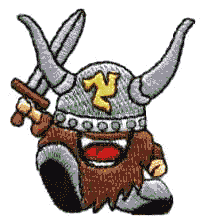When buying an outboard motor, one real factor stands out, Compression. You can buy a compression tester from Sears, Harbor Freight, or Northern Tool that is good enough to test a motor before you purchase it. It's worth the $25. Compression does not have a particular number in all motors. It should run around 120 PSI, but could be as low as 90 PSI (Some Yamaha and OMC motors). What is important is that, From the Highest Cylinder to the Lowest Cylinder should NOT VARY BY MORE THAN +/- 10 PSI. So: #1=90, #2=98, #3=95, #4=99, #5=92, and #6=96 is GOOD, and: #1=135, #2=130, #3=145, #4=140, #5=148, #6=130 is BAD. The first motor's lowest cylinder was 90, and the highest was 99, a 9 psi difference. The second motor's lowest cylinder was 130, and the highest was 148, an 18 psi difference. BEARING PLAY (Excessive Clearance) We use a Dial Indicator, but you can check for bearing problems by using this: Remove spark plugs. Rotate flywheel while holding a long screwdriver against piston top, through spark plug hole. As you rotate flywheel, determine that piston is travelling down (toward crankshaft). Turn flywheel, without screwdriver touching piston, to insure that crankshaft is "Pulling" the piston down. About 1/16 of a revolution. Push down on piston dome with screwdrive and see how much play you notice. As long as the crankshaft is pulling down on the piston, the bearings (both rod and wristpin) are "Stretched" to max lenght. By pushing on the piston, you are "Collapsing" the clearences in the bearings. This is a "field" test and will not disclose all bearing issues, but it will bring to your attention any major bearing problems. That's about it. Everything else involves fuel and spark, but all of those can be fixed relatively cheap compared to a rebuild, what you would be "Stuck" with if you bought a motor with bad compression or bearing issues. Remember, if you have ANY questions, CONTACT US BEFORE you buy. |
Buying a Used Outboard Motor |

When buying an outboard motor, one real factor stands out, Compression. You can buy a compression tester from Sears, Harbor Freight, or Northern Tool that is good enough to test a motor before you purchase it. It's worth the $25. Compression does not have a particular number in all motors. It should run around 120 PSI, but could be as low as 90 PSI (Some Yamaha and OMC motors). What is important is that, From the Highest Cylinder to the Lowest Cylinder should NOT VARY BY MORE THAN +/- 10 PSI. So: #1=90, #2=98, #3=95, #4=99, #5=92, and #6=96 is GOOD, and: #1=135, #2=130, #3=145, #4=140, #5=148, #6=130 is BAD. The first motor's lowest cylinder was 90, and the highest was 99, a 9 psi difference. The second motor's lowest cylinder was 130, and the highest was 148, an 18 psi difference. BEARING PLAY (Excessive Clearance) We use a Dial Indicator, but you can check for bearing problems by using this: Remove spark plugs. Rotate flywheel while holding a long screwdriver against piston top, through spark plug hole. As you rotate flywheel, determine that piston is travelling down (toward crankshaft). Turn flywheel, without screwdriver touching piston, to insure that crankshaft is "Pulling" the piston down. About 1/16 of a revolution. Push down on piston dome with screwdrive and see how much play you notice. As long as the crankshaft is pulling down on the piston, the bearings (both rod and wristpin) are "Stretched" to max lenght. By pushing on the piston, you are "Collapsing" the clearences in the bearings. This is a "field" test and will not disclose all bearing issues, but it will bring to your attention any major bearing problems. That's about it. Everything else involves fuel and spark, but all of those can be fixed relatively cheap compared to a rebuild, what you would be "Stuck" with if you bought a motor with bad compression or bearing issues. Remember, if you have ANY questions, CONTACT US BEFORE you buy. |